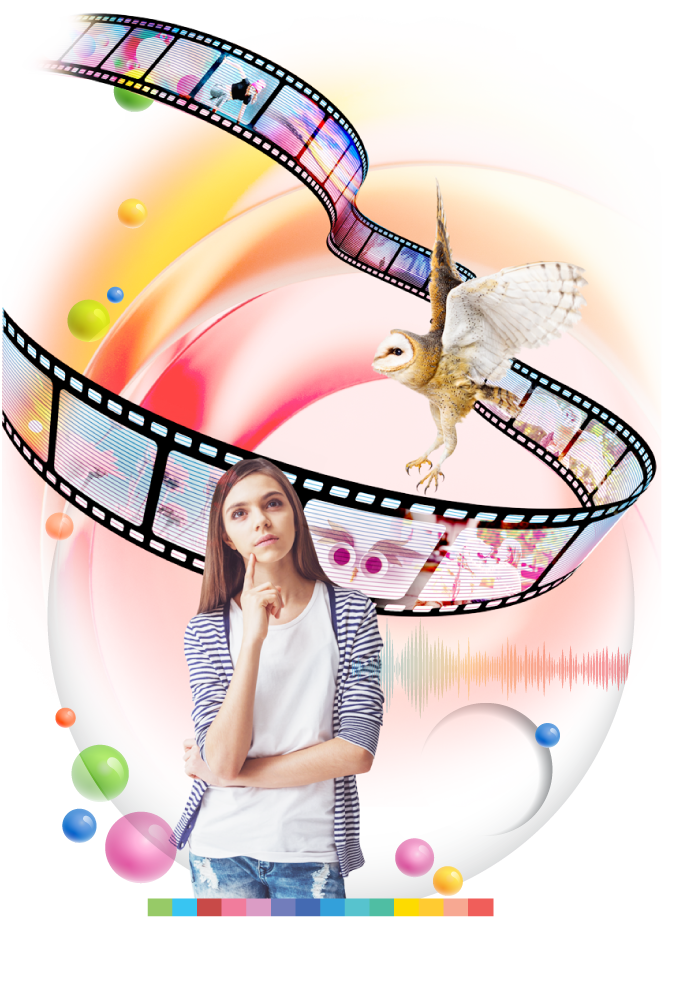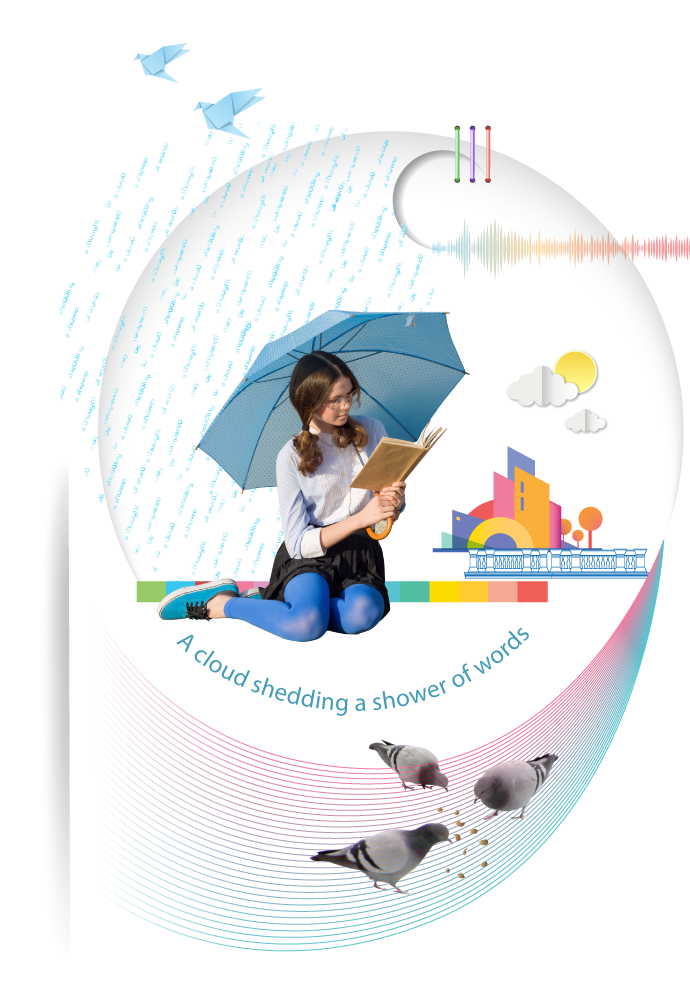Making Meaning
Lev Vygotsky described thought as ‘a cloud shedding a shower of words’ and the transition from thought to words as leading to the emergence of meaning.[1] Traditionally, in education, this process is ‘ABCDE-minded’ and ‘alphabetic-writing’ oriented, as educators and media theorists Neil Postman and Charles Weingartner defined it. They famously branded the conversion of the ‘shower of words’ that is occurring inside our minds into an articulated expression as the process of meaning-making.[2]
Symbolic systems of communication are used to express meaning in various academic disciplines such as languages, mathematics, physics, and chemistry. Symbolic systems in which certain signs or combinations of them indicate an object/subject, action or description are known as semiotic systems. Among them are musical notation, Morse code, the Braille tactile writing system, sign language, semaphore signals with lights or flags, and much more if you start really thinking about it. A semiotic system is a language developed by humans to exchange meaning in different domains of life.
Chilean biologists and philosophers Humberto Maturana and Francisco Varela write:
‘Every reflection, including one on the foundation of human knowledge, invariably takes place in language, which is our distinctive way of being human and being humanly active. For this reason, language is also our starting point, our cognitive instrument, […] we shall sum it up in an aphorism […]:
‘Everything said is said by someone.’ [3]
This is also consistent with the statement made by educational critics Neil Postman and Charles Weingartner:
‘There is no learning without a learner.
And there is no meaning without a meaning maker.’[4]
Let’s see how these statements apply to R@W multimodal communication.

Metacognition
In R@W the learner is envisioned as a central ripple in their unique ripplework.
The learner is given an opportunity to unpack the power of their individuality and develop their own way of learning in accordance with their ‘jagged profile’.
Although the student is free to act according to their interests, curiosity, imagination, concern or some other individual attractor, their actions are influenced by their NST surroundings. Some existing conditions of the given NST may restrict their actions, while others may catalyze them.
In the digital age, communication is shaped by technology, creating worldwide connections and establishing possibilities for global collaboration.
In addition, characteristics of digital media like modularity, automation, and algorithmic manipulation enhance the possibilities of converting feelings and thoughts into novel forms of expression. By remixing textual, video, audio, photo, graphic, motion, and interactive elements, we can now communicate meaning multimodally with the use of more than one mode. We can then articulate the unspoken ‘shower of words’ with underlying emotions more effectively, involving higher-order thinking and learning more about ourselves.

Mind-Cinema
In R@W, we will refer to Vygotsky’s term ‘shower of words’ as mind-cinema. The reason for the use of this term is that what we see and experience in our thinking is not just words. In fact, it is often not words at all, but fleeting fragments of images, remnants of music, flavors and smells forever wrapped in our emotions, connected with those shreds of memory or imagined visions and ideas. We define mind-cinema as what we ‘see’ or ‘experience’ in our minds.
This means that the process of metacognition is not straightforward.
‘The human mind is not easily accessible,’ writes Rudolf Arnheim, perceptual psychologist and art and film theorist; ‘… the person’s own mind tends to shrink when it is watched.’ For this reason, we use the analogy of cinema as today’s most emotionally embracing medium of expression. This allows us to observe our own minds gently, not with the scalpel of rationality and judgment but with the acceptance of what it is. We are connecting emotional snippets from the mind-cinema with the available modes of expression, ‘making knots and mooring them’ into the material form of the outside world. The goal is to reveal the pattern behind our thinking, to understand how it can be better used in everyday life.
Cinematography originates from two Greek words—‘kinesis (the root of cinema), meaning movement, and grapho, which means to write or record’ [5]. Therefore, as Ed Sikov, professor of film studies, explains, ‘Writing with movement and light … [is] a great way to begin to think about the cinematographic content of motion pictures’ (loc. 953). From this point of view, multimodal communication, as we see it in R@W—writing with images, sounds and movement—can be termed cinematic writing.
R@W cinematic writing is the medium of expression where the learner creates his or her individual semiotic system for conveying meaning by studying their own mind.
Ideation
The term ideation refers to the formation of ideas leading to meaning-making. Although multimodality is a relatively new concept, such ideation techniques as multimodal mind-mapping and brainstorming have gained popularity in the last decade or so. These are methods for representing the correlation between visualized elements by coding thoughts into words/shapes/colors/movements. Mind-mapping and brainstorming are the springboards of the R@W multimodal ideational processes.
Multimodal communication—cinematic writing is an excellent device with which an individual learner can experiment as they develop their own semiotic system of expression so that it becomes a powerful cognitive tool for self-exploration.
REFERENCES
1. Vygotsky, Lev S. (1934). Thought and Language [Kindle version, 2012, loc 346]. In E. Hanfmann, G. Vakar & A. Kozulin (Eds). Massachusetts Institute of Technology.
2. Postman, Neil & Weingartner, Charles (1969). Teaching as a Subversive Activity [Kindle version, p. 85]. A Delta Book.
3. Maturana, Humberto R. & Varela, Francisco J. (1998). The Tree of Knowledge: The Biological Roots of Human Understanding [p.26]. Revised Edition. Boulder CO: Shambhala.
4. Postman, Neil & Weingartner, Charles (1969). Teaching As a Subversive Activity [Kindle version, p. 81]. A Delta Book. Retrieved from: Amazon.com
5. Ed Sikov (2010). Film Studies: An Introduction, (Film and Culture Series) [Kindle version, loc 953. . New York: Columbia University Press.

